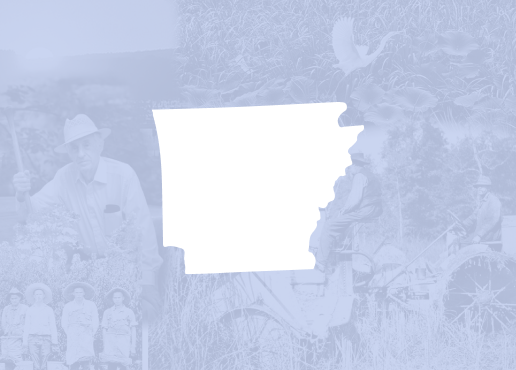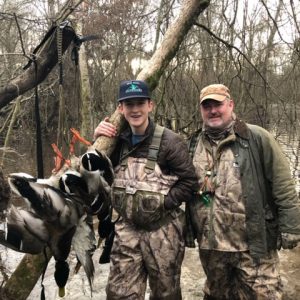calsfoundation@cals.org
Arkansas Wildlife Federation
The mission of the Arkansas Wildlife Federation (AWF) is “to advocate for the sustainable use of Arkansas’ wildlife habitats and natural resources for future generations.” The nonprofit AWF works to conserve and protect land and water habitat in Arkansas, as well as game and fish.
Market hunters of the nineteenth and early twentieth centuries had hunted much of the native wildlife in Arkansas—such as the buffalo, elk, wolf, and trumpeter swan populations—to extinction, near extinction, or extirpation. Market hunters also decimated most of the native deer, black bear, mountain lion, and turkey populations within Arkansas. To protect the wildlife remaining in Arkansas, the AWF was founded in 1936, the same year as the formation of its parent organization, the National Wildlife Federation. In 1944, AWF sponsored and worked for the passage of Amendment 35, which helped create the autonomous Arkansas Game and Fish Commission (AGFC). To inform AWF members, media, government officials, and organizations about its activities, the AWF began publishing the bimonthly newspaper Arkansas Out-of-Doors in June 1946.
Beginning in the mid-1980s, the AWF advocated for the passage of the one-eighth of one percent Conservation Sales Tax Amendment (Amendment 75), which was adopted in 1996 and funds the programs and operations of the AGFC. In August 2003, the AWF published the Arkansas Wildlife Federation Duck Report, “Improving the Quality of Duck Hunting in Arkansas,” which resulted in changes in duck-hunting regulations. The organization continues to conduct waterfowl seminars covering habitat management, biology, and other topics.
In an effort to protect and conserve forests throughout Arkansas, the AWF and others convinced the U.S. Forest Service to reduce clear-cutting in the Ouachita and Ozark National Forests. AWF also worked cooperatively on the planning and implementation of the Oak Forest Symposium, whose subject was the decline of oaks in Arkansas’s national forests. This was the origin of the Bearcat Hollow Project, which began in 2010. AWF supported the addition of approximately 100,000 acres of wilderness “walk-in areas” in the Ozark and Ouachita National Forests. AWF supported land trades with Weyerhaeuser and Potlatch that resulted in more than 100,000 acres of wildlife-rich lands being added to national wildlife refuges and forests. The AWF joined the Lake Ouachita Citizens Focus Committee to create a forty-five-mile hiking/biking trail on the south side of Lake Ouachita.
The AWF has organized regional farm seminars to inform farmers of the financial benefits of government programs that encourage conservation, in addition to conducting conservation contests in schools. The organization also hosts the Annual Governor’s Conservation Achievement Awards Banquet.
AWF opened a new office at 401 W. Bingham Road in Little Rock (Pulaski County) in 2012 on thirty-three acres of land donated by Charles and Joyce Logan. Part of the land will be used for a nature area open to the public.
In 2012, AWF was one of ten conservation efforts nationwide selected by Field & Stream magazine and Toyota as “Hero for a Day” for the work and benefits for wildlife habitat accomplished on public lands in America.
For additional information:
Arkansas Wildlife Federation. http://www.arwild.org/ (accessed October 12, 2021).
Sutton, Keith, ed. Arkansas Wildlife: A History. Fayetteville: University of Arkansas Press: 1998.
Wilson, Steve. “Amendment 2 Passes.” Arkansas Wildlife 27 (Winter 1996–1997): 1.
Wayne Shewmake
Arkansas Wildlife Federation
 Environment
Environment Hancock, Archibald Rex, Jr.
Hancock, Archibald Rex, Jr. Trey Buckner
Trey Buckner  Trey Buckner in Washington
Trey Buckner in Washington 




Comments
No comments on this entry yet.